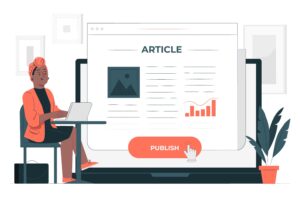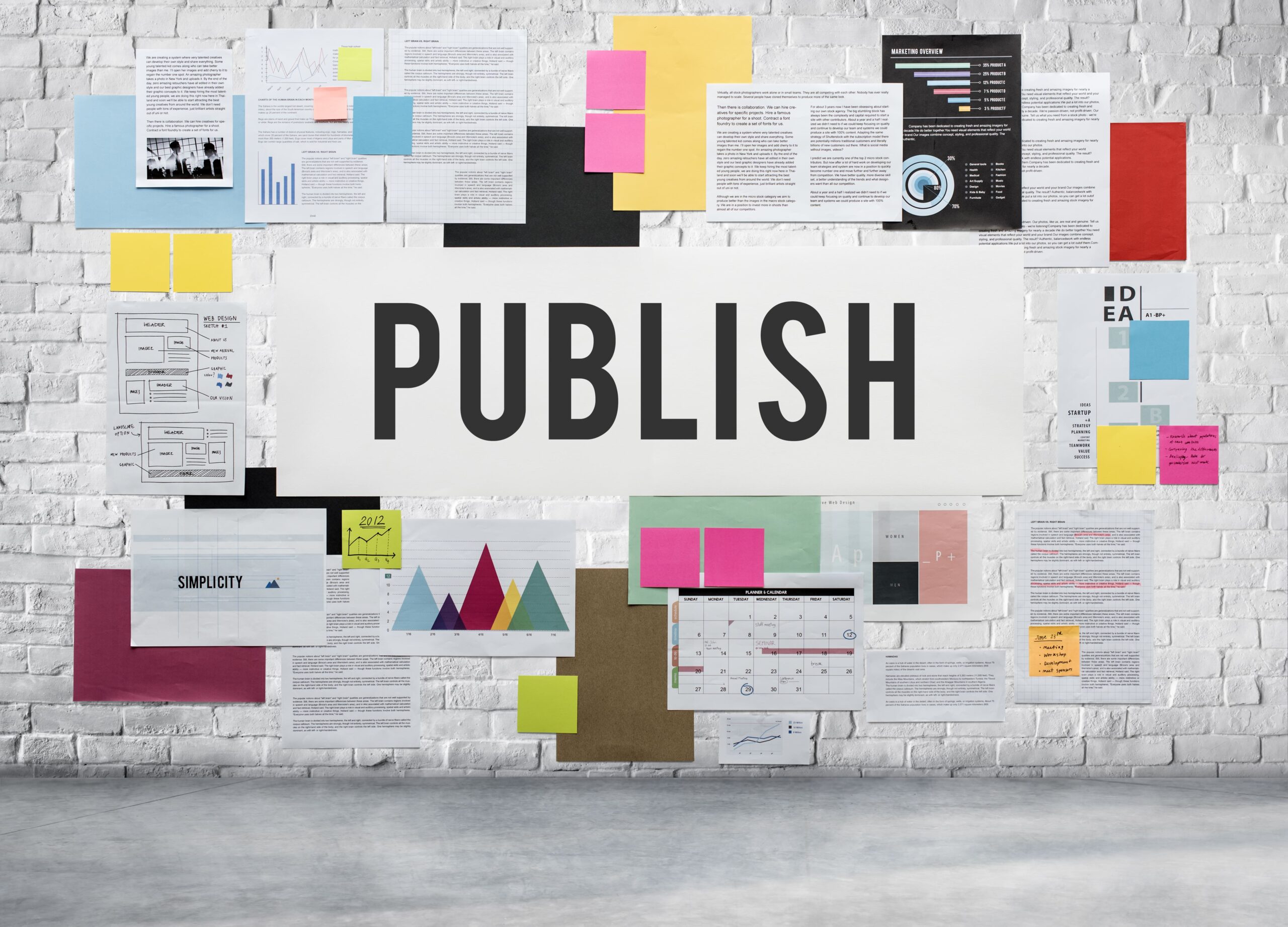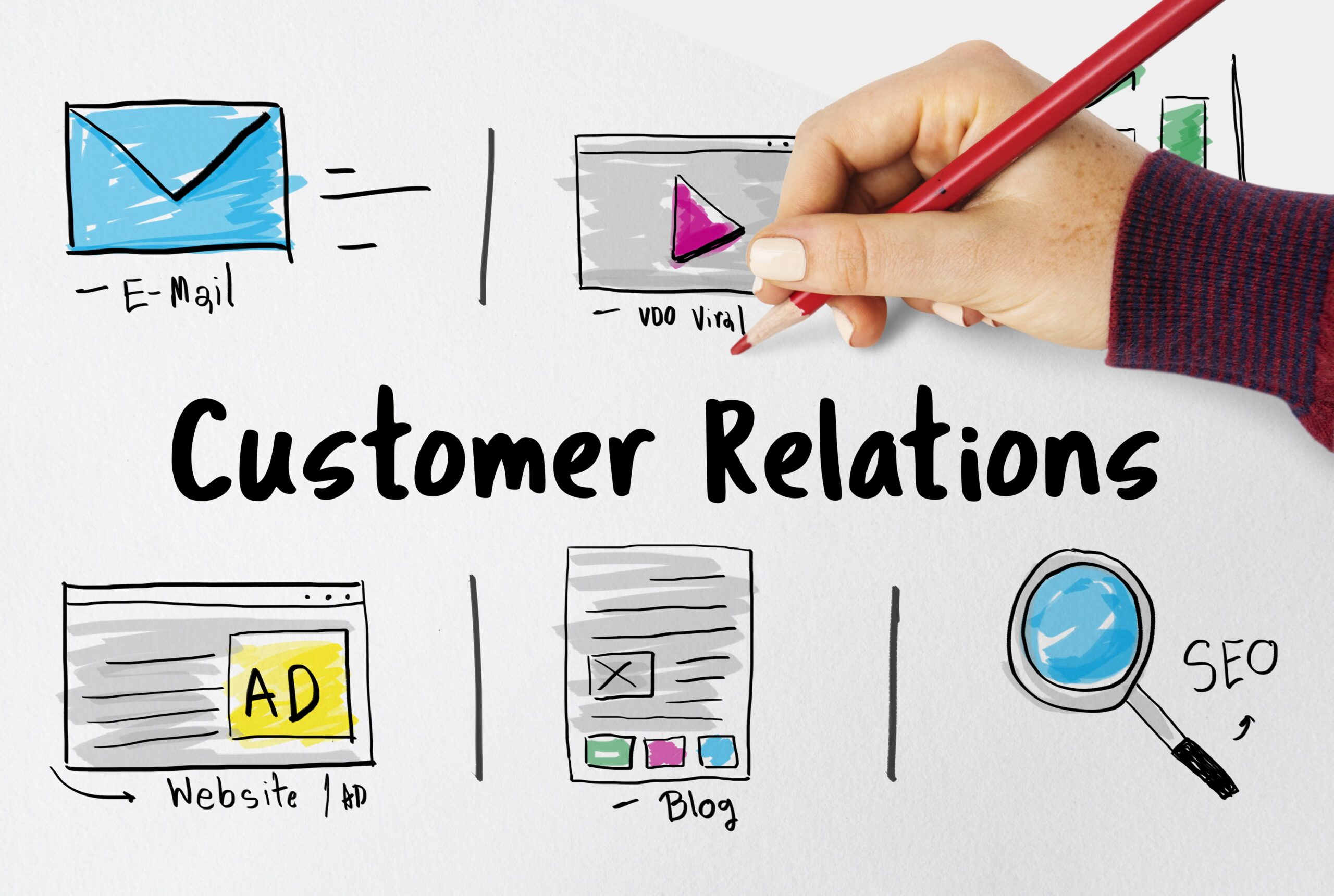Email Marketing Publishers: Boosting Engagement and Results
Picture this: email marketing publishers are constantly seeking innovative ways to engage their audience and drive conversions.
As an email marketing publisher, you understand the importance of staying ahead in the game, but sometimes it can be challenging to find that perfect strategy.
This blog post is here to help!
We’ll dive into the power of segmentation for increased engagement, explore personalization and data-driven insights, and discuss automation in email marketing. Furthermore, we will delve into optimizing inbox placement factors like sender reputation management, domain authentication techniques, and list hygiene best practices.
But wait – there’s more! We will also touch on mobile optimization for better results and integrating social media channels with your campaigns. Finally, learn how A/B testing can lead to continuous improvement through subject line testing, call-to-action button optimization, and layout experimentation.
Email marketing publishers won’t want to miss these expert tips for taking their strategies to new heights!
Table of Contents:
- Leveraging Segmentation in Email Marketing: A Game Changer for Publishers
- Harnessing Personalization and Automation for Email Marketing Success
- Optimizing Email Content for Mobile Devices: A Must-Do Strategy
- Social Media Channels: Amplify Your Email Marketing Strategy
- Testing Key Elements of Email Campaigns: The Ultimate Guide
- Email Marketing Publishers Best Practices
- What are the best practices for email marketing publishers?
- How can I optimize my email campaigns to increase engagement and conversions?
- What strategies should I use to ensure successful delivery of emails?
- How do I measure the success of my email marketing campaigns?
- Are there any tips or tricks that experienced email marketers use to improve their results?
- Conclusion

Leveraging Segmentation in Email Marketing: A Game Changer for Publishers
Alright, let’s dive right in.
Email marketing is a potent tactic for publishers, and segmentation can up the ante.
But what exactly is segmentation?
In simple terms, it’s dividing your subscribers into smaller groups based on shared characteristics like demographics or interests.
Mailchimp’s research shows that segmented campaigns have a 14% higher open rate compared with non-segmented ones. Impressive, right?
Creating Subscriber Segments Based on Demographics and Interests
To start segmenting your list effectively:
- Analyze subscriber data such as age, location, and purchase history.
- Create segments based on these criteria – think “young adults interested in sci-fi novels.”
Crafting Tailored Content for Each Segment
Tailoring content to each segment means better engagement rates and fewer unsubscribe requests. Here are some tips:
- Create unique subject lines that resonate with each group (e.g., “New Sci-Fi Releases You’ll Love”).
- Offer personalized recommendations or exclusive deals relevant to their interests.
This approach not only increases open rates but also fosters stronger relationships between you and your audience.
Actionable Takeaways:
- Gather demographic information about your subscribers through sign-up forms or surveys.
- Analyze this data to create meaningful segments.
- Develop tailored content that speaks directly to each group’s interests and needs.
Ready for more email marketing tips? Check out our blog for the latest insights.
Now you’re equipped with the knowledge of segmentation in email marketing, it’s time to implement these strategies and watch your engagement rates soar.

Harnessing Personalization and Automation for Email Marketing Success
As a modern-day blog editor experienced with SEO, I know that to truly maximize your email marketing efforts as a publisher, you need to embrace the power of personalization and automation.
Why, you ask?
Experian research shows that personalized emails generate six times higher transaction rates than generic mass-mailings. Pretty impressive, huh?
Utilizing Data-driven Insights for Personalization
The key to unlocking this potential lies in data-driven insights. Gather information about your subscribers’ preferences, behaviors, and demographics through sign-up forms or surveys. This treasure trove of data allows you to craft tailored content that speaks directly to each subscriber segment – boosting engagement like never before.
Implementing Automation Tools Like Autoresponders
You might be thinking: “That sounds great. But how can I manage all these personalized interactions without drowning in work?” Enter automation tools such as autoresponders. These handy little helpers allow you to send triggered emails based on real-time user actions – think welcome messages after signing up or follow-ups after downloading an eBook. Epsilon research notes that these triggered emails boast click-through rates almost double those seen in traditional batch-and-blast campaigns. Automation: the secret sauce to personalized email marketing without losing your sanity.
Ready to give it a shot?
Want more tips on personalization and automation? Check out this comprehensive guide by DirectIQ.
Incorporating personalization and automation into your email marketing strategy will undoubtedly elevate your publisher game, driving higher engagement rates and ultimately boosting conversions. So go ahead – harness their power today.

Optimizing Email Content for Mobile Devices: A Must-Do Strategy
In today’s fast-paced world, mobile devices have become our go-to gadgets for accessing emails on the fly. More than half of all emails are opened on smartphones or tablets, making it crucial to optimize your email content for these handy little screens. But don’t worry. I’ve got you covered with some actionable tips and tricks that’ll help you create responsive designs that adapt seamlessly across different screen sizes and resolutions.
Designing Mobile-Friendly Email Templates
First things first – let’s talk templates.
A well-designed template can make or break your email marketing campaign, especially when targeting mobile users.
- Keep it simple: Stick to a single-column layout that allows text and images to flow smoothly down the page without requiring horizontal scrolling. Remember, less is more.
- Say goodbye to tiny fonts: Use larger font sizes (at least 14px) so readers won’t need a magnifying glass just to read your message. Trust me, their eyes will thank you later.
- Calls-to-action matter: Make sure buttons are large enough (44×44 pixels minimum) and spaced out adequately so they’re easy for fingers – not just cursors – to tap on accurately.
Ensuring Seamless Adaptation Across Various Devices
Moving right along…
Having a mobile-friendly template is just the beginning; now it’s time to ensure your content looks perfect across all devices with responsive design.
Responsive design is the strategy to pursue, and it could potentially bring about a boost of 30% in click-to-open proportions compared with non-responsive layouts.
- Test before sending: Use email testing tools like Litmus, Email on Acid, or PutsMail to see how your emails look across various devices and email clients. Better safe than sorry.
- Avoid large images: Compress images without sacrificing quality using tools like TinyPNG. Smaller file sizes mean faster loading times for recipients – no one likes waiting around.
- CSS media queries are your friend: These handy lines of code help you create rules that apply only when certain conditions (like screen size) are met. This way, you can tweak styles specifically for smaller screens while keeping things looking sharp on desktops too.
Incorporate these tips into your email marketing strategy, and watch as engagement rates soar among mobile users who appreciate the seamless experience you’re providing them with. Your subscribers will thank you – trust me.
Key Takeaway:
To optimize email content for mobile devices, it’s important to use a single-column layout with larger font sizes and adequately spaced-out buttons. Testing before sending and using CSS media queries can ensure seamless adaptation across various devices, leading to higher engagement rates among mobile users.

Social Media Channels: Amplify Your Email Marketing Strategy
Let’s explore the potential of this powerful combination.
Integrating social media into your email marketing plan can propel it to an advanced level of success and coverage.
Curious how? Let me break it down for you:
Incorporating Social Sharing Buttons Within Email Content
Add those little buttons.
Social sharing buttons make it easy for recipients to share their favorite articles directly from within your emails, driving traffic back to your website and potentially attracting new subscribers in the process. Campaign Monitor has an excellent guide on adding these buttons effectively.
Promoting Newsletter Subscriptions Through Social Platforms
Invite your social media audience to become part of your newsletter too?
DirectIQ delves deeper into this topic.
Bonus Tip: Leverage cross-promotion between email and social platforms. Sprout Social provides some great insights here.
Now that we’ve covered integrating social media with email marketing, let’s dive into some best practices:
- Ensure your email content is share-worthy by creating engaging, informative, and valuable pieces that resonate with your audience.
- Monitor the performance of shared content on social media platforms to understand what works best for your target audience. Use this data to refine future campaigns.
- Create a seamless experience between email and social channels by maintaining consistent branding elements such as logos, colors, and tone of voice across all touchpoints.
By incorporating these strategies into your marketing efforts, you’ll be able to maximize the potential reach of each campaign while building stronger relationships with both existing subscribers and new prospects alike.

Testing Key Elements of Email Campaigns: The Ultimate Guide
As a modern-day blog editor experienced with SEO that writes with an active voice, I know that to maximize your email marketing efforts as a publisher, it’s crucial to test and optimize various elements within your campaigns.
That’s why I’ve got you covered with this comprehensive 5-step guide for testing key components of your emails. Let’s get started.
Step #1: Implement A/B testing for subject lines. This is the first thing subscribers see when they receive an email from you. Testing different variations will help you identify which ones resonate best with your audience and lead to higher open rates. Check out Campaign Monitor’s A/B testing guide for more insights.
Step #2: Tweak those call-to-action (CTA) buttons. Your CTA button plays a vital role in driving conversions, so experiment with different text, colors, and placement options to find the most effective combination. Here are some tips from Neil Patel on creating high-converting CTAs.
Step #3: Optimize your overall email layouts. Test multiple layouts – single column vs multi-column or image-heavy vs text-based – to determine which one drives better engagement among recipients. Need inspiration? Explore these email layout design tips from Canva.
Step #4: Experiment with send times and frequencies. Finding the perfect time to send your emails can significantly impact open rates. Attempting various days, times and cadences (daily, weekly or monthly) can assist in recognizing what works best for your crowd. This MailerLite article offers some helpful insights on finding the ideal send time.
Step #5: Analyze email content length. Are your subscribers more likely to engage with shorter or longer content? Try testing different word counts in your campaigns and measure their performance using metrics like click-through rate (CTR) and conversion rate. OptinMonster’s guide on email length best practices is a great resource for getting started.
Eager to learn even more about optimizing email marketing campaigns? Dive into DirectIQ’s extensive library of guides and ebooks here.
Pull up those sleeves, start experimenting with these techniques, and watch your email marketing success soar.
Key Takeaway:
To maximize email marketing efforts as a publisher, it’s crucial to test and optimize various elements within campaigns. This comprehensive 5-step guide covers A/B testing for subject lines, tweaking call-to-action buttons, optimizing overall email layouts, experimenting with send times and frequencies, and analyzing email content length to determine what works best for your audience.

Email Marketing Publishers Best Practices
If you’re a marketer or small business owner, email marketing can be a powerful tool to reach your audience and drive conversions. However, to make the most of your email campaigns, it’s important to follow best practices that will help you optimize your strategy and achieve your goals. Here are some frequently asked questions about email marketing publishers and the best practices to follow:
What are the best practices for email marketing publishers?
Some of the best practices for email marketing publishers include:
- Maintaining a clean and engaged subscriber list
- Segmenting your audience
- Personalizing content
- Automating campaigns based on user behavior
- Optimizing for mobile devices
- Integrating with social media channels
- Conducting A/B testing to improve performance
- Monitoring key metrics
Learn more about these practices in this guide.
How can I optimize my email campaigns to increase engagement and conversions?
To optimize your email campaigns for increased engagement and conversions, consider the following strategies:
- Use segmentation strategies like demographic-based or interest-based targeting
- Personalize content using data-driven insights
- Create compelling subject lines
- Design clear call-to-action buttons
- Test different layouts through experimentation
Explore additional optimization techniques in this article.
What strategies should I use to ensure successful delivery of emails?
To ensure successful delivery of emails, follow these strategies:
- Maintain a good sender reputation by following industry standards
- Authenticate your domain using SPF (Sender Policy Framework), DKIM (DomainKeys Identified Mail) or DMARC (Domain-based Message Authentication Reporting & Conformance)
- Regularly clean up your mailing lists by removing inactive subscribers
Discover more about improving deliverability in this comprehensive guide.
How do I measure the success of my email marketing campaigns?
You can measure the success of your email marketing campaigns by tracking key performance indicators (KPIs) such as:
- Open rate
- Click-through rate (CTR)
- Conversion rate
- Bounce rate
- Unsubscribe rate
Analyzing these metrics will help you identify areas that need improvement and optimize your campaigns. Read more about measuring email marketing success in this blog post.
Are there any tips or tricks that experienced email marketers use to improve their results?
Experienced email marketers often leverage advanced techniques like predictive analytics, dynamic content, and multivariate testing to enhance campaign performance. They also stay updated on industry trends and best practices through resources such as webinars, podcasts, blogs and conferences. Learn from the experts by checking out these email marketing tips.
Conclusion
In conclusion, email marketing is a potent means for publishers to interact with their readers and increase conversions. To improve your email marketing efforts, it is important to segment your list based on demographics and interests, personalize content, automate campaigns, optimize inbox placement factors, optimize for mobile devices, utilize social media channels, and conduct A/B testing.
As an email marketing publisher looking to take advantage of these strategies for better results in 2024, DirectIQ offers an all-in-one solution that simplifies the process of creating effective campaigns. Sign up today at DirectIQ.












